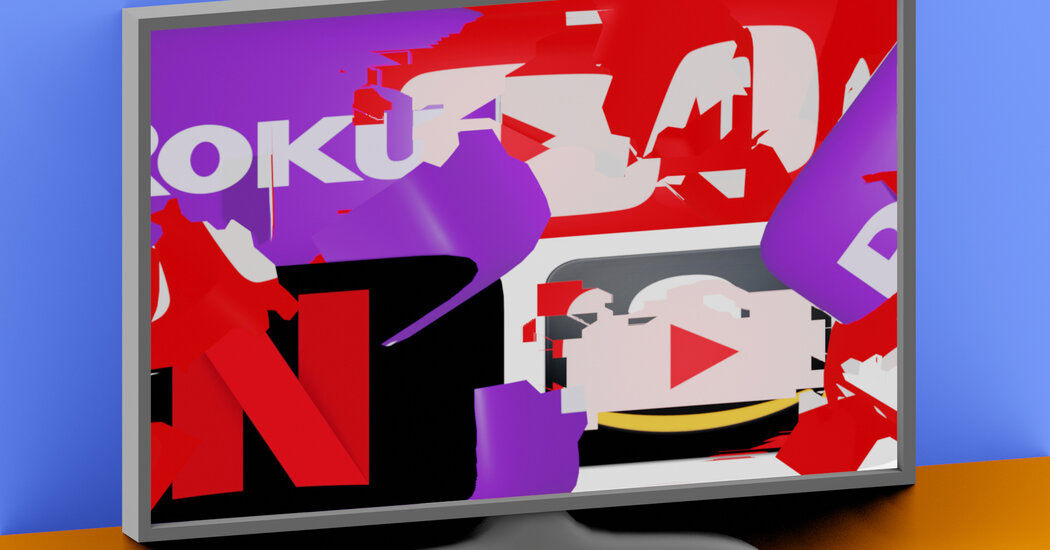This article is part of the On Tech newsletter. You can sign up here to receive it weekdays.
There are constant fights among powerful digital companies over what streaming video apps appear on our living room TV sets. It shows how the overlords of new TV are falling into the same bad habits as old TV.
Let me explain why fights over money, power and our personal information are popping up all over streaming entertainment, and how we’re caught in the middle.
One root of the problem is that the streaming TV app systems such as Amazon’s Fire TV and Roku work almost exactly like cable television and not like smartphone apps. (Wasn’t streaming supposed to free us from the annoyances of cable TV?)
I want us to remember one thing: Streaming entertainment is great in so many ways, but the standard business practices that are developing around it are rotten. It’s turning what should be the simple pleasure of watching TV into an ugly mess.
For exhibit A, I point you to the recent squabbling between Google’s YouTube and Roku, which makes gadgets to connect TV sets to online video apps. Their beef is complicated, but the result was that Roku threatened to block one of YouTube’s apps, and Google threatened to send free alternative streaming gadgets to Roku customers. Each side said the other was a bully.
A version of this fight keeps happening. When Amazon and the owner of HBO bickered over money and control of data on people’s watching habits, people for months couldn’t watch HBO Max on Amazon’s Fire TV streaming video device or through Amazon’s Prime Video app. The same thing almost happened in a dispute between NBC’s Peacock video service and Roku.
The wild thing is just how familiar this feels. The beefs and temporary blackouts of programming are exactly how old TV has worked for decades. Cable TV, and now the new TV app stores, have no standard terms, so everything is a hard-fought negotiation.
Think about it: ESPN is in your cable lineup because of a complicated contract hammered out every few years between the channel’s owner, Walt Disney, and Comcast or another provider. If the two sides reach a contract impasse, college football might disappear from your TV for awhile. Repeat that for every single channel on the dial.
As with cable TV, Amazon, Roku and their peers often reach individual contracts with streaming services after negotiations over fees the streaming app might pay, whether Amazon or Roku get to show commercials in another company’s video app or minute aspects of how a streaming app functions.
It’s hand-to-hand combat with each TV app. Just like with cable TV, the company with the toughest lawyers or the most power often wins.
This isn’t how smartphone app stores work. Apple and Google set terms that (usually) apply equally to all apps, rather than one-by-one agreements. App makers comply with those terms and rules or get out.
Yes, there are serious downsides to that system. App makers and regulators complain that it gives Apple and Google near total control over our digital lives. But the benefit of making the same rules for every app is it reduces the constant fighting.
We don’t need more capricious dictators, but maybe streaming services and TV apps could take a lesson from the one-size-fits-all rules of smartphone app stores.
Another idea: Maybe we should make our TVs dumber by ditching apps entirely. Would we be better off if TVs didn’t have app stores at all, but were just web browsers on our TV sets?
Or what if they all used technology like Apple’s AirPlay to mirror our smartphones on a bigger TV screen? Instead of firing up the Netflix or Peacock app on our TV or set top box, we’d use the app on our phone and the image would automatically appear on our TV. This might be clunky. And when I’ve spoken to experts in streaming video technology, some of them have said this would reduce the video quality that people expect on TV screens.
But you can see what I’m struggling with. I don’t want to fossilize the bad old ways of cable TV in what should be our brand-new world of entertainment.
Before we go …
Updates on that fuel pipeline: The F.B.I. said a criminal gang, DarkSide, was behind a cyberattack that disrupted a major pipeline for gasoline and jet fuel. DarkSide, which makes technology for criminals to launch cyberattacks, also suggested that it didn’t want its technology used for this particular type of crime. OK, sure.
This woman is the voice of Alexa. Amazon tried to keep secret for years that the person behind Alexa is a voice actress named Nina Rolle, according to this Wired excerpt from a new book on the company. The excerpt also has great details about how Amazon hired temp workers to read scripts for hours in fake homes to stress test its voice technology.
One symptom of America’s dysfunctional internet is that no one knows exactly how many people lack modern internet service. Here is The Verge’s county-by-county map of where the gaps are.
Hugs to this
Gritty, the VERY WEIRD mascot of the Philadelphia Flyers hockey team, is the stupid fun we all need. In response to fan challenges, Gritty did an interpretive dance while holding a Jell-O mold, jousted in an office chair and watched “Rocky II” while sitting in a kiddie pool filled with soft pretzels.
We want to hear from you. Tell us what you think of this newsletter and what else you’d like us to explore. You can reach us at [email protected].
If you don’t already get this newsletter in your inbox, please sign up here. You can also read past On Tech columns.
Source: Read Full Article
